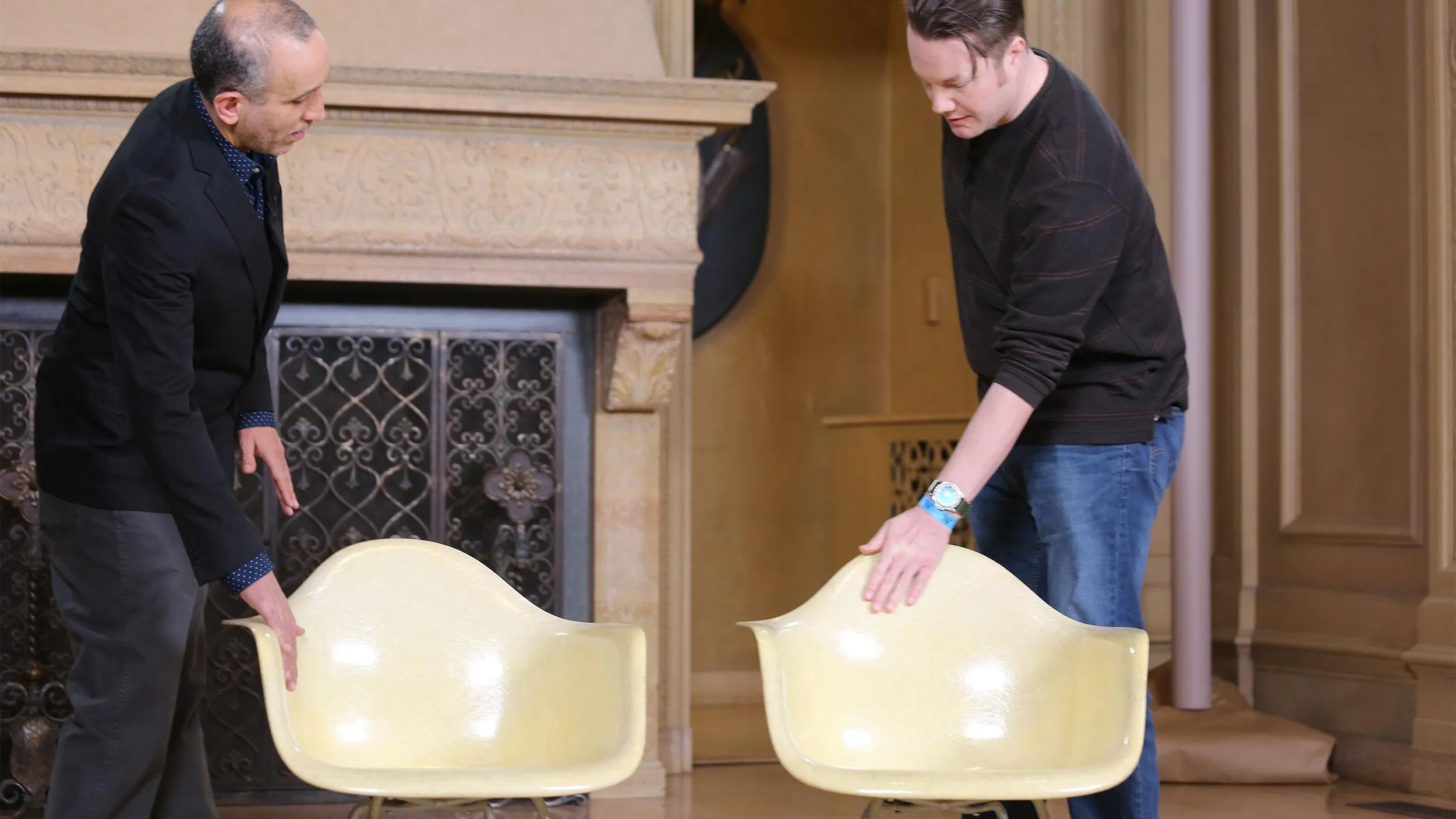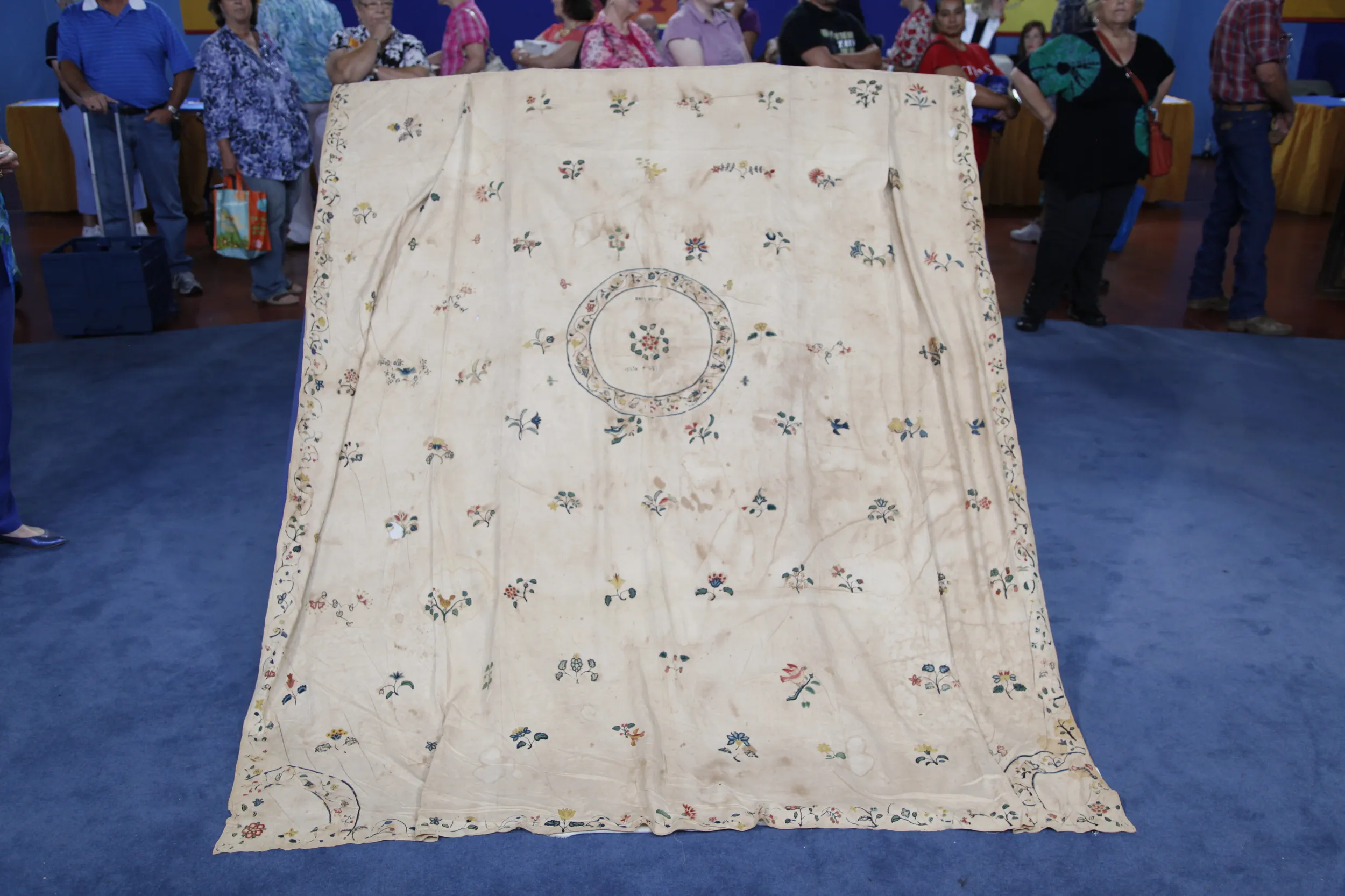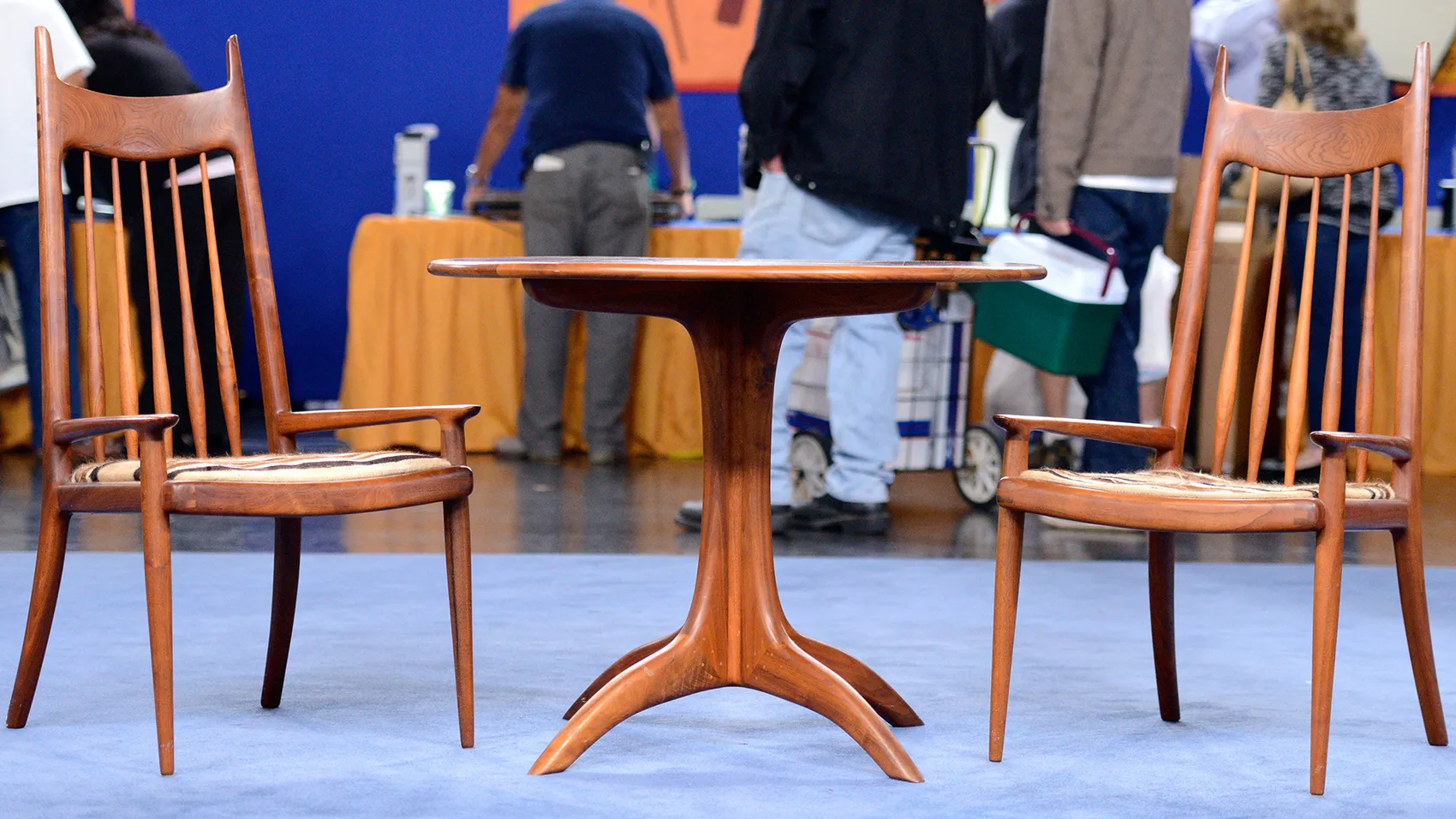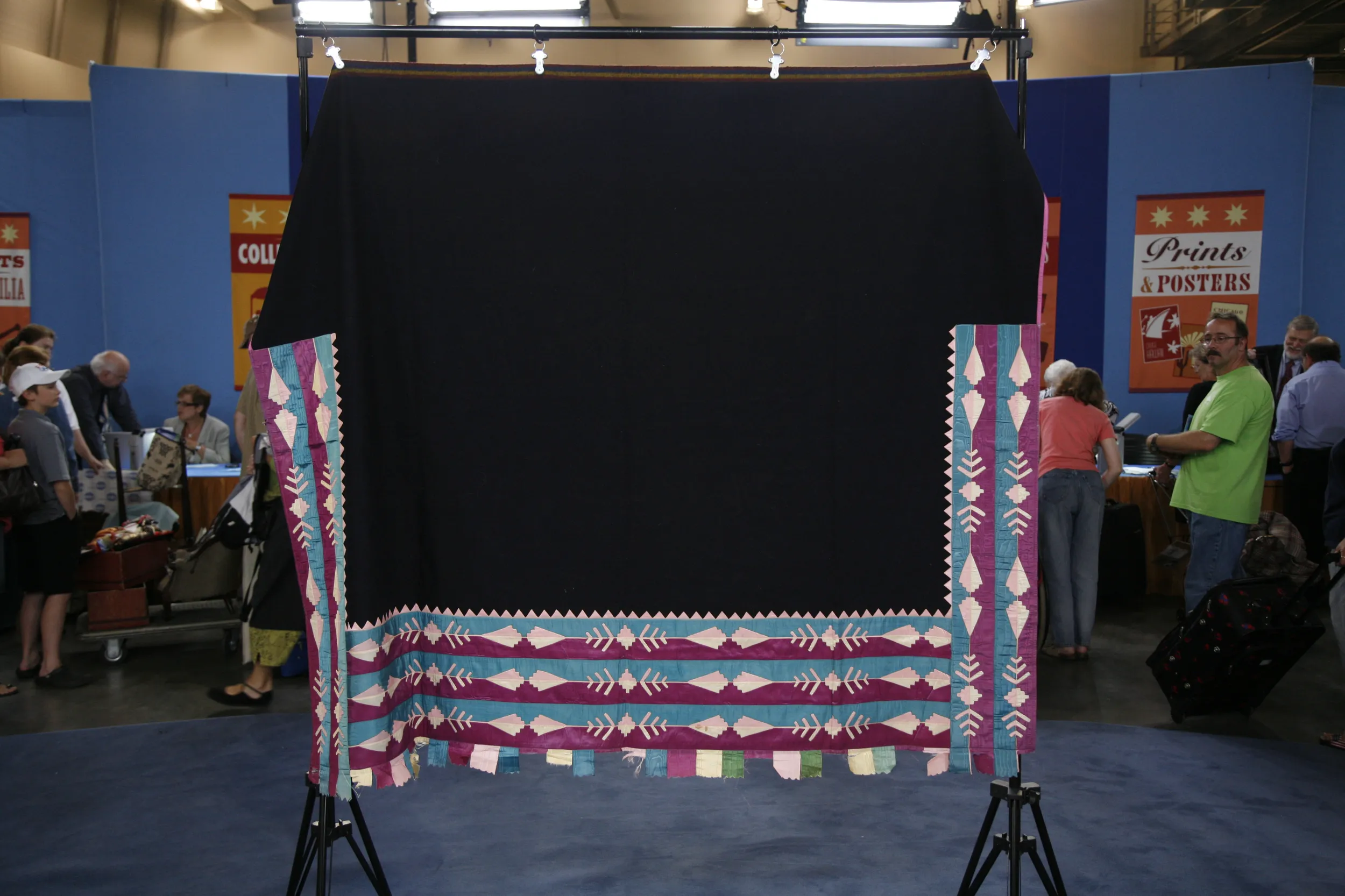GUEST: My friend works for a staging company, and they needed to get the house cleared before they could stage it, and everything was gonna go to the dump. So I hurried over and loaded up my car, and I wasn't sure what anything was. There was a lot of photographs, books, ledgers, and these really struck me, so I'm just curious what they're all about.
APPRAISER: How long have you had them?
GUEST: About a year or so.
APPRAISER: They've endured for quite a long time, maybe from the 1870s, 1880s.
GUEST: Wow.
APPRAISER: So that's about 140, 150 years. So they are sturdy. They're also dirty.
GUEST: Yes. (laughing): Yeah, you smell it.
APPRAISER: That's a problem, in a certain sense, but it can be remedied. There are three textiles here. They represent three weaving traditions of the Southwest. So this is a Navajo woman's wearing blanket. It's called a chief blanket style.
GUEST: Mm-hmm.
APPRAISER: A prestige blanket, with the reason why we're referring to it as a woman's blanket is because the brown and white stripes are very narrow. Men had big, broad bands or stripes of white and brown. This is a child's blanket, much smaller. It has just a traditional pattern of stripes, which is a designs pattern that was incorporated by the Navajo from the Pueblo people. And here we have a Pueblo woman's manta from the pueblo of Hopi in Arizona.
GUEST: Okay.
APPRAISER: The materials are critical here. This is all-natural wool raised by the Navajo. The red in this is an aniline red. It's something that was provided by the traders to the Navajo.
GUEST: Mm-hmm.
APPRAISER: It's after vegetal and natural dyes were no longer being utilized, so that helps date this.
GUEST: Okay-- okay.
APPRAISER: Right around the 1870s.
GUEST: Oh, wow.
APPRAISER: This is a really, really innovative textile. Here you have four pointed crosses.
GUEST: Mm-hmm.
APPRAISER: This is typically representative of the four Sacred Directions. But here, you have an amazing complex zigzag design. This design is of indigo, and that's a very, very desirable pigment. You have indigo here. You have indigo also, a different shade, in the child's blanket. This whole panel here is also indigo. Each of these textiles are in rather rough condition. But these are indigenous wearing garments...
GUEST: Right.
APPRAISER: Of the Old West. On the woman's second-phase transitional wearing blanket, I would put a retail value of between $4,500 and $5,500.
GUEST: Wow.
APPRAISER: On the child's blanket, I would value this in the $3,500 to $4,500 range.
GUEST: Nice.
APPRAISER: And on the woman's Hopi manta, I would value this in the range of $3,500 to $4,500.
GUEST: (laughing): I'm glad I saved it from the trash.








